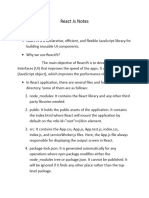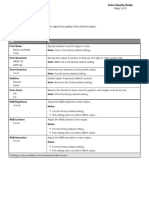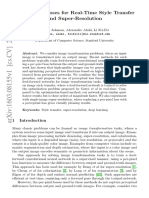20/02/2025, 19:13 createRoot – React
v19
API REFERENCE CLIENT APIS
createRoot
createRoot lets you create a root to display React components
inside a browser DOM node.
const root = createRoot(domNode, options?)
Reference
createRoot(domNode, options?)
root.render(reactNode)
root.unmount()
Usage
Rendering an app fully built with React
Rendering a page partially built with React
Updating a root component
Error logging in production
Troubleshooting
I’ve created a root, but nothing is displayed
I’m getting an error: “You passed a second argument to root.render”
I’m getting an error: “Target container is not a DOM element”
I’m getting an error: “Functions are not valid as a React child.”
My server-rendered HTML gets re-created from scratch
Reference
createRoot(domNode, options?)
https://react.dev/reference/react-dom/client/createRoot 1/16
�20/02/2025, 19:13 createRoot – React
Call createRoot to create a React root for displaying content inside a
browser DOM element.
import { createRoot } from 'react-dom/client';
const domNode = document.getElementById('root');
const root = createRoot(domNode);
React will create a root for the domNode , and take over managing the DOM
inside it. After you’ve created a root, you need to call root.render to display
a React component inside of it:
root.render(<App />);
An app fully built with React will usually only have one createRoot call for its
root component. A page that uses “sprinkles” of React for parts of the page
may have as many separate roots as needed.
See more examples below.
Parameters
domNode : A DOM element. React will create a root for this DOM element
and allow you to call functions on the root, such as render to display
rendered React content.
optional options : An object with options for this React root.
optional onCaughtError : Callback called when React catches an error
in an Error Boundary. Called with the error caught by the Error
Boundary, and an errorInfo object containing the componentStack .
optional onUncaughtError : Callback called when an error is thrown and
not caught by an Error Boundary. Called with the error that was
thrown, and an errorInfo object containing the componentStack .
https://react.dev/reference/react-dom/client/createRoot 2/16
�20/02/2025, 19:13 createRoot – React
optional onRecoverableError : Callback called when React
automatically recovers from errors. Called with an error React
throws, and an errorInfo object containing the componentStack .
Some recoverable errors may include the original error cause as
error.cause .
optional identifierPrefix : A string prefix React uses for IDs
generated by useId . Useful to avoid conflicts when using multiple
roots on the same page.
Returns
createRoot returns an object with two methods: render and unmount .
Caveats
If your app is server-rendered, using createRoot() is not supported. Use
hydrateRoot() instead.
You’ll likely have only one createRoot call in your app. If you use a
framework, it might do this call for you.
When you want to render a piece of JSX in a different part of the DOM
tree that isn’t a child of your component (for example, a modal or a
tooltip), use createPortal instead of createRoot .
root.render(reactNode)
Call root.render to display a piece of JSX (“React node”) into the React
root’s browser DOM node.
root.render(<App />);
React will display <App /> in the root , and take over managing the DOM
inside it.
See more examples below.
https://react.dev/reference/react-dom/client/createRoot 3/16
�20/02/2025, 19:13 createRoot – React
Parameters
reactNode : A React node that you want to display. This will usually be a
piece of JSX like <App /> , but you can also pass a React element
constructed with createElement() , a string, a number, null , or
undefined .
Returns
root.render returns undefined .
Caveats
The first time you call root.render , React will clear all the existing HTML
content inside the React root before rendering the React component into
it.
If your root’s DOM node contains HTML generated by React on the server
or during the build, use hydrateRoot() instead, which attaches the event
handlers to the existing HTML.
If you call render on the same root more than once, React will update the
DOM as necessary to reflect the latest JSX you passed. React will decide
which parts of the DOM can be reused and which need to be recreated by
“matching it up” with the previously rendered tree. Calling render on the
same root again is similar to calling the set function on the root
component: React avoids unnecessary DOM updates.
root.unmount()
Call root.unmount to destroy a rendered tree inside a React root.
root.unmount();
An app fully built with React will usually not have any calls to root.unmount .
https://react.dev/reference/react-dom/client/createRoot 4/16
�20/02/2025, 19:13 createRoot – React
This is mostly useful if your React root’s DOM node (or any of its ancestors)
may get removed from the DOM by some other code. For example, imagine a
jQuery tab panel that removes inactive tabs from the DOM. If a tab gets
removed, everything inside it (including the React roots inside) would get
removed from the DOM as well. In that case, you need to tell React to “stop”
managing the removed root’s content by calling root.unmount . Otherwise,
the components inside the removed root won’t know to clean up and free up
global resources like subscriptions.
Calling root.unmount will unmount all the components in the root and
“detach” React from the root DOM node, including removing any event
handlers or state in the tree.
Parameters
root.unmount does not accept any parameters.
Returns
root.unmount returns undefined .
Caveats
Calling root.unmount will unmount all the components in the tree and
“detach” React from the root DOM node.
Once you call root.unmount you cannot call root.render again on the
same root. Attempting to call root.render on an unmounted root will
throw a “Cannot update an unmounted root” error. However, you can
create a new root for the same DOM node after the previous root for that
node has been unmounted.
Usage
Rendering an app fully built with React
If your app is fully built with React, create a single root for your entire app.
https://react.dev/reference/react-dom/client/createRoot 5/16
�20/02/2025, 19:13 createRoot – React
import { createRoot } from 'react-dom/client';
const root = createRoot( document.getElementById('root') );
root.render( <App /> );
Usually, you only need to run this code once at startup. It will:
1. Find the browser DOM node defined in your HTML.
2. Display the React component for your app inside.
index.js index.html App.js Reset
import { createRoot } from 'react-dom/client';
import App from './App.js';
import './styles.css';
const root = createRoot(document.getElementById('root'));
root.render(<App />);
https://react.dev/reference/react-dom/client/createRoot 6/16
�20/02/2025, 19:13 createRoot – React
If your app is fully built with React, you shouldn’t need to create any more
roots, or to call root.render again.
From this point on, React will manage the DOM of your entire app. To add
more components, nest them inside the App component. When you need to
update the UI, each of your components can do this by using state. When you
need to display extra content like a modal or a tooltip outside the DOM node,
render it with a portal.
Note
When your HTML is empty, the user sees a blank page until the app’s
JavaScript code loads and runs:
<div id="root"></div>
This can feel very slow! To solve this, you can generate the initial
HTML from your components on the server or during the build. Then
your visitors can read text, see images, and click links before any of
the JavaScript code loads. We recommend using a framework that
does this optimization out of the box. Depending on when it runs,
this is called server-side rendering (SSR) or static site generation
(SSG).
Pitfall
Apps using server rendering or static generation must call
hydrateRoot instead of createRoot . React will then hydrate (reuse)
https://react.dev/reference/react-dom/client/createRoot 7/16
�20/02/2025, 19:13 createRoot – React
the DOM nodes from your HTML instead of destroying and re-
creating them.
Rendering a page partially built with React
If your page isn’t fully built with React, you can call createRoot multiple
times to create a root for each top-level piece of UI managed by React. You
can display different content in each root by calling root.render .
Here, two different React components are rendered into two DOM nodes
defined in the index.html file:
index.js index.html Components.js Reset
import './styles.css';
import { createRoot } from 'react-dom/client';
import { Comments, Navigation } from './Components.js';
const navDomNode = document.getElementById('navigation');
const navRoot = createRoot(navDomNode);
navRoot.render(<Navigation />);
const commentDomNode = document.getElementById('comments');
const commentRoot = createRoot(commentDomNode);
commentRoot.render(<Comments />);
https://react.dev/reference/react-dom/client/createRoot 8/16
�20/02/2025, 19:13 createRoot – React
You could also create a new DOM node with document.createElement() and
add it to the document manually.
const domNode = document.createElement('div');
const root = createRoot(domNode);
root.render(<Comment />);
document.body.appendChild(domNode); // You can add it anywhere in the docu
To remove the React tree from the DOM node and clean up all the resources
used by it, call root.unmount .
root.unmount();
This is mostly useful if your React components are inside an app written in a
different framework.
Updating a root component
You can call render more than once on the same root. As long as the
component tree structure matches up with what was previously rendered,
React will preserve the state. Notice how you can type in the input, which
means that the updates from repeated render calls every second in this
example are not destructive:
index.js App.js Reset
https://react.dev/reference/react-dom/client/createRoot 9/16
�20/02/2025, 19:13 createRoot – React
import { createRoot } from 'react-dom/client';
import './styles.css';
import App from './App.js';
const root = createRoot(document.getElementById('root'));
let i = 0;
setInterval(() => {
root.render(<App counter={i} />);
i++;
}, 1000);
It is uncommon to call render multiple times. Usually, your components will
update state instead.
Error logging in production
By default, React will log all errors to the console. To implement your own
error reporting, you can provide the optional error handler root options
onUncaughtError , onCaughtError and onRecoverableError :
https://react.dev/reference/react-dom/client/createRoot 10/16
�20/02/2025, 19:13 createRoot – React
import { createRoot } from "react-dom/client";
import { reportCaughtError } from "./reportError";
const container = document.getElementById("root");
const root = createRoot(container, {
onCaughtError : ( error , errorInfo ) => {
if (error.message !== "Known error") {
reportCaughtError({
error,
componentStack: errorInfo. componentStack ,
});
}
},
});
The onCaughtError option is a function called with two arguments:
1. The error that was thrown.
2. An errorInfo object that contains the componentStack of the error.
Together with onUncaughtError and onRecoverableError , you can can
implement your own error reporting system:
index.js reportError.js App.js Reset
import { createRoot } from "react-dom/client";
import App from "./App.js";
import {
onCaughtErrorProd,
onRecoverableErrorProd,
onUncaughtErrorProd,
} from "./reportError";
const container = document.getElementById("root");
const root = createRoot(container, {
// Keep in mind to remove these options in development to leverage
Show more
https://react.dev/reference/react-dom/client/createRoot 11/16
�20/02/2025, 19:13 createRoot – React
Troubleshooting
I’ve created a root, but nothing is displayed
Make sure you haven’t forgotten to actually render your app into the root:
import { createRoot } from 'react-dom/client';
import App from './App.js';
const root = createRoot(document.getElementById('root'));
root.render(<App />);
Until you do that, nothing is displayed.
I’m getting an error: “You passed a second argument
to root.render”
A common mistake is to pass the options for createRoot to
root.render(...) :
https://react.dev/reference/react-dom/client/createRoot 12/16
�20/02/2025, 19:13 createRoot – React
Console
Warning: You passed a second argument to root.render(…) but
it only accepts one argument.
To fix, pass the root options to createRoot(...) , not root.render(...) :
// 🚩 Wrong: root.render only takes one argument.
root.render(App, {onUncaughtError});
// ✅ Correct: pass options to createRoot.
const root = createRoot(container, {onUncaughtError});
root.render(<App />);
I’m getting an error: “Target container is not a DOM
element”
This error means that whatever you’re passing to createRoot is not a DOM
node.
If you’re not sure what’s happening, try logging it:
const domNode = document.getElementById('root');
console.log(domNode); // ???
const root = createRoot(domNode);
root.render(<App />);
For example, if domNode is null , it means that getElementById returned
null . This will happen if there is no node in the document with the given ID
at the time of your call. There may be a few reasons for it:
1. The ID you’re looking for might differ from the ID you used in the HTML
file. Check for typos!
https://react.dev/reference/react-dom/client/createRoot 13/16
�20/02/2025, 19:13 createRoot – React
2. Your bundle’s <script> tag cannot “see” any DOM nodes that appear
after it in the HTML.
Another common way to get this error is to write createRoot(<App />)
instead of createRoot(domNode) .
I’m getting an error: “Functions are not valid as a
React child.”
This error means that whatever you’re passing to root.render is not a React
component.
This may happen if you call root.render with Component instead of
<Component /> :
// 🚩 Wrong: App is a function, not a Component.
root.render(App);
// ✅ Correct: <App /> is a component.
root.render(<App />);
Or if you pass a function to root.render , instead of the result of calling it:
// 🚩 Wrong: createApp is a function, not a component.
root.render(createApp);
// ✅ Correct: call createApp to return a component.
root.render(createApp());
My server-rendered HTML gets re-created from
scratch
https://react.dev/reference/react-dom/client/createRoot 14/16
�20/02/2025, 19:13 createRoot – React
If your app is server-rendered and includes the initial HTML generated by
React, you might notice that creating a root and calling root.render deletes
all that HTML, and then re-creates all the DOM nodes from scratch. This can
be slower, resets focus and scroll positions, and may lose other user input.
Server-rendered apps must use hydrateRoot instead of createRoot :
import { hydrateRoot } from 'react-dom/client';
import App from './App.js';
hydrateRoot(
document.getElementById('root'),
<App />
);
Note that its API is different. In particular, usually there will be no further
root.render call.
PREVIOUS
Client APIs
NEXT
hydrateRoot
Copyright © Meta Platforms, Inc
uwu?
Learn React API Reference
https://react.dev/reference/react-dom/client/createRoot 15/16
�20/02/2025, 19:13 createRoot – React
Quick Start React APIs
Installation React DOM APIs
Describing the UI
Adding Interactivity
Managing State
Escape Hatches
Community More
Code of Conduct Blog
Meet the Team React Native
Docs Contributors Privacy
Acknowledgements Terms
https://react.dev/reference/react-dom/client/createRoot 16/16





































































































